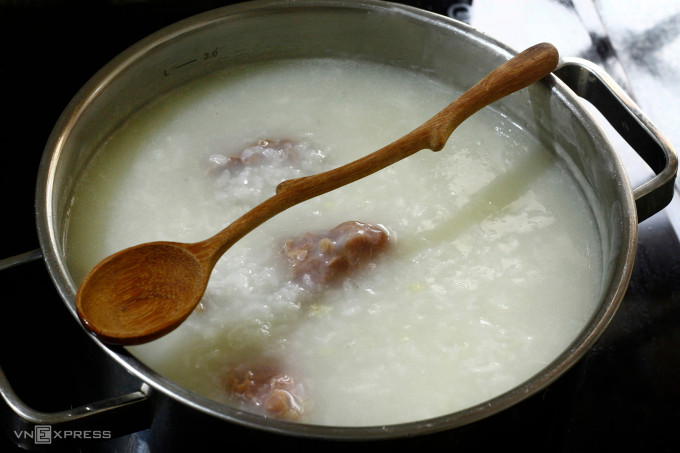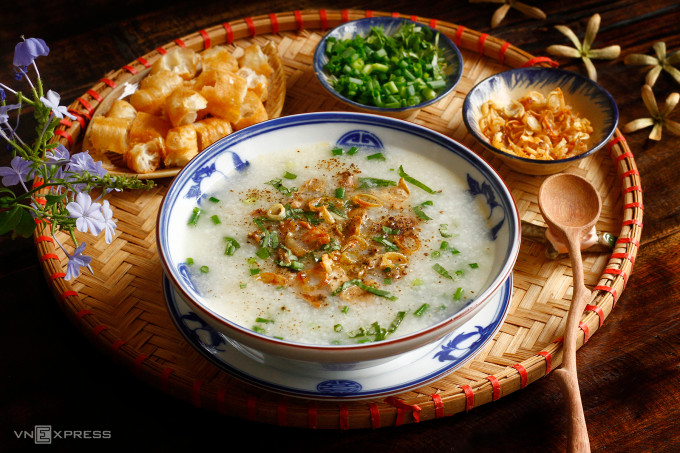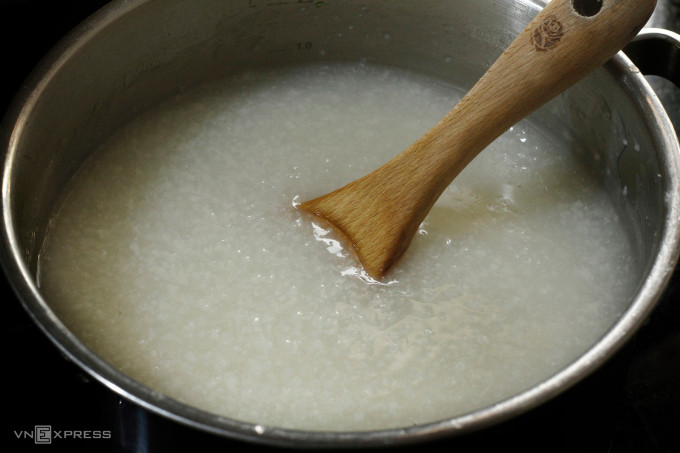If you don't watch the heat carefully when cooking porridge, just one minute of neglect can cause it to overflow. Here are some simple tips to help prevent this from happening.
Place chopsticks or wooden spoon on the mouth of the pot.

According to the experience that mothers have passed down for a long time, when cooking porridge, you should open the lid and place a pair of chopsticks or a wooden spoon horizontally across the mouth of the pot to prevent foam from overflowing. The reason is that the higher the temperature, the more water bubbles (porridge bubbles) escape and float up the pot to the surface.
Cooking porridge for a long time will cause more bubbles to rise and cause overflow. If you use a wooden spoon, it will not absorb water (hydrophobic), so the bubbles will not be able to follow. Moreover, the temperature of the wooden spoon is lower than 100°C, causing the bubbles to condense and turn into liquid, causing the bubble surface to break. Be careful not to use a metal spoon or spoon because it conducts heat well and the bubbles will easily overflow.
Add a little sesame oil to the pot of porridge.
According to the book "Book of 800 tips in daily life" by Thanh Nien Publishing House 2000, add a few drops of sesame oil to the porridge pot, when the porridge boils, lower the heat and cook so it doesn't overflow.
From a physical perspective, sesame oil has a lower density and surface tension than water. In addition, oil and water are incompatible because water is a polar molecule that can only dissolve in polar solvents, while cooking oil has a non-polar molecular structure. Therefore, sesame oil does not dissolve in water and the oil film always floats on the surface of the porridge. This limits the porridge's air bubbles from rising, preventing them from overflowing.
Add rice when water is warm

Clean the rice first, boil a pot of lukewarm water (about 50 - 60 degrees) and then add the rice. When cooking, open the lid and keep the heat low. This method also limits the porridge from overflowing when cooking. There is an old proverb that says "Rice boiled over low heat is delicious. Porridge boiled over high heat will leave an empty pot".
In the book "Salty, Fat, Sour, Hot", author Alice Waters, a famous American chef and culinary teacher, shares that bubbling water is gentler than boiling water, so it will not squeeze the food so much that they break apart, the low heat source will slowly soften the rice grains. Starch absorbs the liquid to expand or dissolve, so the porridge will quickly soften.
Cook porridge with rice cooker
A quick and convenient way that many modern housewives often use is to cook porridge with a rice cooker. Wash the rice bricks and soak them for at least 30 minutes, then put them in the rice cooker, add 40 - 50 degree warm water with accompanying ingredients such as ribs, pig's feet, then cover the lid, press the "Cook" button to cook normally. After 15 - 20 minutes of boiling water, press the switch to "Warm" mode. Cover the pot and let it sit for 30 - 45 minutes to have the desired soft porridge.
Add salt

When cooking porridge or pasta, add a little salt at the beginning. Salt helps control the boiling temperature of the water and limits high foaming. Salt is also the secret to weakening the pectin molecules in cereals, helping the rice to soften faster. Moreover, salt helps the taste buds to work more strongly, so when eating porridge, it tastes better than when added later.
TH (according to VnExpress)